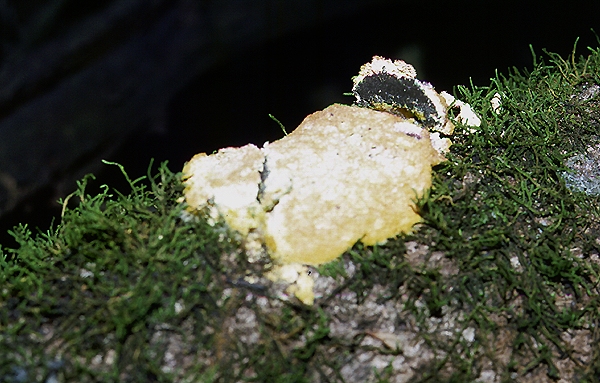
Fuligo septica J.F.Gmel.

Common name: Flowers of Tan or Slime Mould.
Description: The fruiting bodies form large, brilliant yellow, shapeless and rather slimy masses. The size is very variable depending upon food resources, but diameters of 320 cm are common. As the structure ages, it becomes pallid and brownish, and the interior of the mass becomes violet-black due to the presence of mature spores. The resemblance to scrambled eggs is quite pronounced.
The globose spores measure 69 µm in diameter, and are finely punctate, dark in colour and violet-black in mass.
Substratum: In forests, this fungus can be found on rotting logs or large accumulations of composting litter. In gardens, it often appears on wood-chip mulch. Fuligo septica has also appeared in large quantities on the grass of rich pastures.
Distribution: This species is found throughout Australia.
Notes: Fuligo septica was called Flowers of Tan because it often appeared on piles of spent tan bark which had been processed to remove the tannin for curing hides to make leather. Strictly speaking, this organism is no longer considered to be a true fungus, although for many years, slime moulds such as Fuligo septica were placed in the fungal kingdom because mycologists and biologists were uncertain where else to put them. Today, it is generally recognised that the slime moulds form a distinct kingdom of organisms.
Slime moulds are very different from true fungi in that when the organism emerges from the spore, it is able to move around in a similar fashion to an amoeba. The mobile cell then feeds on bacteria or other tiny food particles and reproduces by simple cell splitting (mitosis) until there are perhaps billions of cells. A chemical signal is then given and all the cells move to a central point to form the reproductive mass which for Fuligo septica rather resembles scrambled eggs. Other slime mould species form beautiful and delicate structures; one resembles tiny globose baskets on a short stem.

